<return to Visioning Workshops
<<return to User Meeting
Biosciences
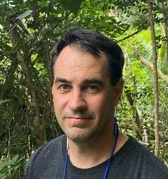 |
Greg HuraBeamline Scientist at the SIBYLS Beamline Expertise/Abstract The speed of genomic sequencing has rapidly increased; opening up 3 billion years of evolutionary engineering, new disease treatment opportunities and provides a perspective on the complex networks involved in most biological processes. Enabled by high throughput approaches, rather than focusing on a single system or pathway we study multiple pathways and processes. We use synchrotrons with the view that in cellular networks there are only a few degrees of separation between the actions of any two molecules. Of particular interest are hub proteins which, through multiple interactions or adopting specific conformations, signal alternate cellular outcomes. By developing an intuition in diverse bio-macromolecular systems we also work on engineering macromolecules for new functions. Building intuition on the large networks and multi-level feedback loops in cellular systems requires many measurements which current capabilities cannot deliver. An understanding of mechanism has fallen behind the rate at which new molecules of interest are being identified. We develop high throughput solution-based techniques to characterize the conformations biomolecules adopt in the many contexts they encounter. A primary technique has been small angle X-ray scattering or SAXS. X-rays provide access to high resolution. New light sources provide exponentially increasing power. The two aspects combined provide insights into conformations of a macromolecule in high throughput. We also develop approaches to combine crystallographic results with SAXS. Crystallography is low throughput but provides unparalleled resolution. SAXS provides access to conformational changes in high throughput. |
 |
Andrej SaliProfessor, Department of Bioengineering and Therapeutic Sciences Expertise/Abstract The Sali group contributes to the discovery of general structural principles that underlie all cellular processes, through maximizing the accuracy, precision, completeness, and efficiency of the structural coverage of proteins and their assemblies. This goal is being achieved by a tight integration of different types of experimental data, physical theories, and statistical inference, spanning all relevant size and time scales. The corresponding software, Integrative Modeling Platform (IMP), has already been applied to determining the structures of a number of macromolecular complexes, including the Nuclear Pore Complex, the major gateway for molecular traffic in and out of a cell’s nucleus. |
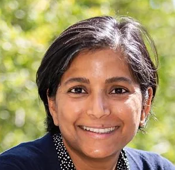 |
Ritimukta SarangiSenior Scientist (Structural Molecular Biology) SSRL Expertise/Abstract I develop and apply hard X-ray spectroscopy sciences to scientific problems in DOE-BES and DOE-BER missions. I lead several independent and complementary activities at SSRL. A particular focus is on homogeneous catalytic systems from metalloenzymes to electrocatalytic transition metal systems. As a senior member of the Structural Molecular Biology Resource management team, I drive the technological development, especially those related to remote-access operations and user access related capabilities on all hard X-ray spectroscopy facilities. |
 |
Jake PushieUniv. of Saskatchewan Research Scientist Saskatchewan Cerebrovascular Centre Expertise/Abstract Some of the most complex human health and disease challenges we currently face require an understanding of a broad range of interdisciplinary topics. I have focus on prion disease and other protein misfolding disorders, trace element trafficking, metabolic disorders, stroke, and cancer treatment. In addition to conventional techniques, I also employ synchrotron-based X-ray absorption spectroscopy (XAS) and X-ray fluorescence microscopy (XFM) in order to obtain essential data that cannot be obtained by other conventional means. |
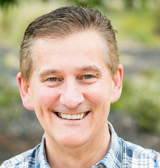 |
Marc AllaireBiophysicist Staff Scientist Molecular Biophysics and Integrated Bioimaging Expertise/Abstract I am the lead scientist for the Berkeley Center for Structural Biology (BCSB) team at the Advanced Light Source (ALS). I have been using synchrotrons in my own biochemistry research since 1992. Early in my career I worked to characterize the effects of radiation damage to samples and developed and proposed a new model to explain the loss of diffraction from x-ray exposure to protein crystals. Over the years I have tackled many challenging crystallographic projects including several membrane protein complexes. Now at BCSB I support a strong pharmaceutical user base involved heavily in structural biology for drug discovery. I look to develop technologies that increase the quantity of structures being solved and enjoy the challenge of solving the growing range of structures and working on new ways to speed up the process. |
 |
Allen OrvilleDiamond Light Source group leader of the new XFEL Hub Expertise/Abstract Despite their immense value, the atomic coordinates derived from ground-state x-ray crystal structures reveal only a portion of the functional story for many important and complex systems in Biology. Consequently, a frontier challenge for many structural biologists is to determine time-resolved crystal structures directly from systems engaged in catalysis. In structural biology this leads to a desire to collect structural, spectroscopic, and if possible, kinetic data too, from the same crystalline samples. To these ends, single-crystal electronic absorption and Raman spectroscopies can be correlated with x-ray crystal structures at several synchrotron facilities, including Diamond Light Source and the Central Laser Facility. However, a set of general tools to fully correlate enzyme kinetics with time-resolved crystallography are not yet readily available. To address this grand challenge, we are working to extended enzyme kinetics strategies to crystalline samples, and to couple these methods to room-temperature, time-resolved, serial crystallographic methods with correlations to single-crystal spectroscopy and other structural methods. Achieving our goals will be transformative and impact nearly all aspects of structural biology. Serial crystallography is a rapidly developing field with the potential to produce time-resolved, atomic resolution movies of macromolecules engaged in catalysis. At the LCLS we are studying several light-triggered reactions, including phytochromes (photon receptors that impact optogentics) and photosystem II (spectroscopy and structure of the water oxidizing complex). Rapid mixing jets and microfluidics systems will support enzyme turnover in time-resolved serial crystallography, which will focus initially on metalloenzyme catalysis. |
 |
Robert RamboScience Group Leader for the Soft Condensed Matter village and former Principal Beamline Scientist for B21 Expertise/Abstract I aid in the development and application of the solution state SAXS beamline B21 at the Diamond Light Source. However, I was trained as an RNA crystallographer in the laboratory of Jennifer A. Doudna when I helped determine the structure of the bacterial signal recognition particle (SRP) and a structural role for potassium ions in the P4-P6 RNA domain (the organizational center for the group I intron). I have helped establish standard purification methods for RNA SAXS experiments and developed new methods for analyzing SAXS data including the volume-of-correlation and chi-free. I specialize in applying new mathematical methods (convex optimization and semi-definite programming) to SAXS experiments and am the author of ScÅtter, a java-based program for bioSAXS. |
 |
Lisa MillerSenior Biophysical Chemist, User Services, Communications, Education & Outreach Office (USCEO), National Synchrotron Light Source II Expertise/Abstract My research focuses on the study of the chemical makeup of cells and tissues using synchrotron-based infrared and x-ray imaging. My work has three primary research areas: (1) understanding how the nanostructure and chemical composition of bone affect its mechanical properties in osteoarthritis and osteoporosis, (2) elucidating the role of metal ions in protein misfolding and neurodegeneration in Alzheimer’s disease and Cerebral Amyloid Angiopathy, and (3) optimizing nutrient availability in the rhizosphere of plants for improved biomass production. |
 |
Sean McSweeneyPhy. Sci. & Research Operation, National Synchrotron Light Source II Expertise/Abstract My managerial and research interests have been to find methods to make the best use of synchrotron lightsources in general, and in particular to reveal the complexity of biological systems, and make these methods accessible to the broadest possible community. The latest manifestation of these interests can beseen in the program for life sciences at NSLS-II and with cryogenic electron microscopy. I recently initiated a new program for imaging biological systems using quantum properties of light (links to the sites are on the right). I have constructed and operated x-ray beamlines for macromolecular crystallography at synchrotron sites since 1991. I have made significant contributions to the automation of synchrotron beamlines. |
 |
Tiffany Victor-LovelaceChemist, Imaging & Microscopy Program, National Synchrotron Light Source II Expertise/Abstract I specialize in UV-vis microscopy, FTIR-Imaging and X-ray Fluorescence In particular I seek to improve the preparation, preservation, and X-ray microanalysis of biological and environmental samples. I provide scientific user support for BER researchers at the imaging and microscopy beamlines at NSLS-II. I currently work on developing X-ray sensitive tags such as Lanthanide Binding Tags (LBTs) to image proteins in cells and tissues using X-ray Fluorescence Microscopy. I seek to apply these technologies to plant-microbe symbiotic systems and trace metal imaging in cells and tissues. |
 |
Zou FinfrockPhysicist at Argonne National Laboratory Expertise/Abstract My research expertise primarily revolves around advancing synchrotron hard X-ray methodologies and pushing the boundaries of state-of-the-art instrumentation, with a particular focus on X-ray spectroscopy, X-ray microscopy and imaging. I have led several technical advancements at the Advanced Photon Source, including X-ray Excited Optical Luminance (XEOL), High Energy Resolution Fluorescence Detection (HERFD), and confocal X-ray microscopy end stations development. Apart from my technical endeavors, I maintain a strong commitment to actively advocating for the utilization of synchrotron X-ray techniques, recognizing their potential to serve as powerful tools capable of catalyzing transformative advancements across diverse scientific disciplines. In my current role as the lead scientist for the eBERlight program at the Advanced Photon Source, I am dedicated to pioneering innovative synchrotron applications tailored for the biological and environmental research communities. My primary emphasis lies in leveraging synchrotron-based X-ray techniques to advance imaging applications within these scientific domains. |
 |
Scott FraserProvost Professor Director of Science Initiatives University of Southern California Expertise/Abstract I have a long-standing commitment to quantitative biology, applying the tools of chemistry, engineering, and physics to problems in biology and medicine. My personal research centers on imaging and molecular analyses of intact biological systems, with an emphasis on early development, organogenesis, and medical diagnostics. We have developmed light and magnetic resonance imaging (MRI) microscopy techniques for imaging the dynamics of embryonic development. More recently my research team has taken these imaging techniques into disease models and clinical medicine, in areas ranging from eye disease to cancer. |
 |
Matthew CliftonHead of Structural and Biophysical Chemistry at Novartis |
 |
Kate L. WhiteGabilan Assistant Professor of Chemistry, USC Expertise/Abstract Our research aims to help bridge the gap between structural biology and physiology by pioneering new experimental and computational tools for multi-scale structural biology (atomic to cellular scales). A major focus is the multi-scale structure and function of pancreatic β-cells and the chemical environment of insulin vesicles. Our approach to cell mapping utilizes a combination of multi-modal imaging, biophysical approaches, and integrative modeling (metamodeling) to relate multi-scale structure to cell function. |
 |
Diane BryantPrincipal Scientific Engineering Associate Advanced Light Source Expertise/Abstract In my time at LBL, I have served in a number of roles, beginning as a student at the 88-inch cyclotron. As an SEA at the ALS, I spent almost 11 years in Biosciences with the Berkeley Center for Structural Biology, where I split my time between user support and various engineering efforts. I joined ALS Photon Sciences Development almost 7 years ago to work on a number of R&D efforts within ALS-U Beamlines and Optical Systems (BOSS), including the wavefront sensor. With the design phase of ALS-U complete, I have moved into new roles that include shepherding critical ALS-U technologies through the procurement process and co-leading the QA effort for BOSS. |
 |
Antoine WojdylaLBNL, research scientist Optics & optical systems, photon science development Expertise/Abstract At the ALS I design and simulate feature beamlines for ALS-U, the diffraction-limited storage ring upgrade of the light source, in order to leverage the high brightness and coherence for microscopy and spectroscopy in the soft x-ray regime, for application in physics, chemistry and biology. My work focuses on the use of diffractive optics, wavefront sensors and deformable mirrors to enable and maintain diffraction-limited performances in insertion device beamlines, developing new technologies for synchrotrons and free-electron lasers. He was previously developing novel imaging techniques for EUV lithography. |
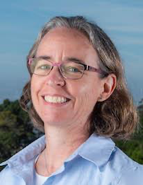 |
Corie RalstonFacility Director, Biological Nanostructures, Molecular Foundry LBNL Expertise/Abstract My interests include the development of new X-ray methods for structural characterization of macromolecules, and the application of these new methods to proteins and protein complexes. Recent work has included the investigation of the movement of carotenoid molecules within proteins involved in the photoprotection mechanism of cyanobacteria, the mechanism of chaperonin proteins in anti-aggregation, and the gating of ions in membrane channel proteins. |
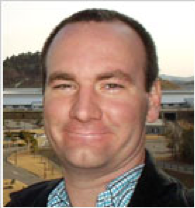 |
James HoltonAssociate Professor UCSF Staff Scientist LBNL Expertise/Abstract As the Director for the Macromolecular Crystallography (MX) X-ray Diffraction Beamline 8.3.1 at the Advanced Light Source I optimize sample preparation and diffraction techniques with particular focus on radiation damage, detector performance and x-ray scattering physics. I’ve also developed absolute-scale simulators for both “conventional” MX and femtosecond nanocrystallography that have been helpful in designing experiments. |
Condensed Matter & Quantum Materials
 |
Giulia GalliProfessor Senior Scientist Quantum simulations for quantum technologies Abstract In this talk, I will describe theoretical and computational strategies based on quantum mechanical calculations, aimed at predicting material properties suitable for the development of quantum technologies. Specifically, I will discuss the electronic structure and coherent states of spin defects in two- and three-dimensional semiconductors and insulators, obtained using both classical and near-term quantum computers. I will also discuss the prediction of complex oxides’ properties for neuromorphic applications. Bio Giulia Galli is the Liew Family Professor of Electronic Structure and Simulations in the Pritzker School of Molecular Engineering and in the Department of Chemistry at the University of Chicago. She also holds a Senior Scientist position at Argonne National Laboratory, where she is the director of the Midwest Integrated Center for Computational Materials. She is an expert in the development of theoretical and computational methods to predict and engineer material and molecular properties using quantum simulations. (https://galligroup.uchicago.edu/). She is a member of the National Academy of Sciences, the American Academy of Arts and Science, and the International Academy of Quantum Molecular Science, and a Fellow of the American Association for the Advancement of Science and of the American Physical Society. Her recognitions include the Theory Award from the Materials Research Society, the David Adler Award in Materials Physics from the American Physical Society (APS), the Aneesur Rahman Prize for Computational Physics from the APS, the Feynman Nanotechnology Prize in Theory, and the Tomassoni-Chisesi award from La Sapienza University in Italy. In 2022 she received the Lifetime Achievement Award from the foundation of Italian Scholars of North America. <return to Condensed Matter and Quantum Materials Visioning Workshop |
Earth and Environmental Sciences
 |
Abby KavnerProfessor How solar-system scale physics and chemistry can help save planet Earth Abstract The solar system is an immense experiment in materials science –covering orders Bio Kavner is an experimental high-pressure mineral physicist, with expertise in <return to Earth and Environmental Sciences Visioning Workshop |
 |
Kim TaitTeck Endowed Chair of Mineralogy & Senior Curator of Mineralogy, Royal Ontario Museum The Importance of Correlative Analyses for Planetary Sample Return Missions Abstract This is an incredibly exciting time to be a planetary sample scientist. Fifty years ago, NASA’s Apollo missions to the moon brought back approximately 382 kilograms of samples, including rocks, rock cores, pebbles, sand, and dust. Scientists have studied many of those samples over decades and have made some incredible discoveries. Recently new samples have been released as part of the Apollo Next Generation Sample Analysis (ANGSA) program [1]. There are a series of other sample return missions, too many to list, but some examples are the Japanese Space Agency (JAXA)-led Hayabusa mission returned a small amount of material from a carbonaceous asteroid Itokawa, June 2010 [2]; the JAXA-led Hayabusa2 returned carbonaceous material from Ryugu December 2020 [3] and a NASA-led mission OSIRIS-REx will be returning carbonaceous material from Bennu September 2023 [4]. While we do have martian meteorites for study currently, these samples have experienced incredible pressures and temperatures from the extraction of the surface of the planet, uncontrolled entry and exposure to terrestrial environments which could alter some of the primary signatures of the samples. With the ability to sample the Martian surface in a controlled way, collect the material and all the “field data” along with the sample, and return the sample under controlled conditions and with sufficient time, we can design a facility in advance of sample delivery to keep those samples in a pristine (i.e., as returned) state for an indefinite period. Also, samples returned from Mars will be “restricted” and need Biosafety Level 4 (BSL-4) containment until deemed safe for release. A Sample Receiving Facility (SRF) is where the Earth Entry System is opened, and the sample tubes are opened and processed after they land on Earth. Samples should be accessible for research in biocontainment for time-sensitive studies and eventually, when deemed safe for release after sterilization or biohazard assessment, should be transferred out of containment for allocation to scientific investigators in outside laboratories. There are two main mechanisms for allocation of samples outside the SRF: 1) Wait until the implementation of the Sample Safety Assessment Protocol (Planetary Protection) results conclude that the samples are non-hazardous, 2) Render splits of the samples non-hazardous by means of sterilization. To make these samples accessible, a series of observations and analytical measurements will need to be completed to produce a sample catalog for the scientific community. Once these samples are accessible, objective-driven investigations are sample analyses and studies performed to address MSR Campaign L1 (Level 1) science objectives in support of campaign success criteria [7]. There will also be opportunity-driven investigations that are studies that are not explicitly conducted to address MSR Campaign L1 objectives and success criteria. Investigators will apply for sample access and–if deemed meritorious through a selection process–would be provided a sample allocation to conduct their research. These investigations will commence after samples have been returned to Earth and will continue indefinitely into the future. These selection review panels will likely take in consideration the amount of material that is required for the study, the impact of the study and how different types of measurements can be done on minimal sample. Martian meteorites are the best material for us to be studying now, to prepare for these MSR samples. Over 100 Martian meteorites have been identified on Earth at the time of this report, ranging in age from 4,400 million years (Ma) to 165 Ma [8]. Analyzing these meteorites provides an opportunity to study the Martian atmosphere [9], Martian surface processes [10], and even Martian water that may have interacted with these rocks when they were once components of the planet’s crust [11]. The extensive range in ages means that we can examine how volcanism, the Martian climate, and the availability of the ingredients of life on Mars have evolved over almost the entirety of Martian history. Shergottite meteorites are the most common type of Martian meteorite, the only samples we have from Mars, and have mafic and ultramafic compositions, like volcanic samples on Earth. The analysis of Martian meteorites is complicated since all Martian meteorites are inherently shocked, undergoing intense deformation during ejection from the Martian surface before landing on Earth. These shock events can cause deformation, mineral transformations, and chemical reactions including the incorporation of Martian atmosphere into certain minerals and glasses through shock compression. The effects of shock metamorphism are so extensive that isotopic heterogeneities are often induced at the nanoscale, complicating efforts to accurately characterize Martian materials with conventional techniques. Using a variety of analytical techniques, such as instruments at the Advanced Light Source (ALS) will be key to studying these rare and precious samples. [1] CK Shearer et al. 51st Lunar and Planetary Science Conference (2020), abstract #1181. [2] A Tsuchiyama et al. 42nd Lunar and Planetary Science Conference (2011), abstract #1788. [3] M Ito et al. 53rd Lunar and Planetary Science Conference (2022), abstract #1601. [4] D Lauretta et al. Space Science Reviews (2017) 212, 925–984 doi:10.1007/s11214-017-0405-1 [5] G Kminek et al. 52nd Lunar and Planetary Science Conference (2021), abstract #1700. [6] K Tait et al. Astrobiology 21 (2021), p. 1–62 doi: 10.1089/ast.2021.0105 [7] T Haltigin et al. Astrobiology 21 (2021), p. 1–92 doi: 10.1089/ast.2021.0122 [8] D Moser et al. Nature 499, p. 454–457 (2013) [9] HB Franz et al. Planetary and Space Science 96, p. 99–113 (2014) [10] H Chennaoui Aoudjehane et al. Science 338, p. 783 doi:10.1126/science.1224514 [11] AH Treiman Chemie der Erde 65, p. 203–270 (2005) doi:10.1016/j.chemer.2005.01.004 Bio Dr. Tait is the Senior Curator of Mineralogy and oversees all of the collections and research programmes related to meteorite, gem, mineral and petrology at ROM. She is also a cross-appointed Professor in the Department of Earth Sciences at the University of Toronto. Dr. Tait started studying geology at the University of Manitoba, and although many aspects of geology interested her, her second-year mineralogy course stuck out as her favorite. It gave her the opportunity to learn about different types of minerals, how to identify them, and the chemical formulas that apply to each of them. She leads a research program employing diffraction and spectroscopy to characterize phosphate and phosphide minerals and analog synthetic phases at ambient and extreme conditions in terrestrial and extraterrestrial materials. Her program currently has a strong focus on Martian meteorites, but she is interested in rare achondrites and lunar samples. Understanding the mineralogy of these rare extra-terrestrial samples are critical to unravelling the most puzzling paradox in the chronology of magmatism, the crystallization history of magmas, differentiation processes, and the conditions of crystallization of the crust of these ancient bodies. Dr. Tait was also a coordinator of ROM exhibit Water: The Exhibition, an innovative show that illustrates the indispensable roles that water plays in our world. She is a member of the Mars Sample Return Campaign group, a joint NASA-ESA group which is planning for the return of Mars samples in the 2030s. She is also a co-investigator on the science team for the Canadian instrument OLA on the OSIRIS-REx mission. <return to Earth and Environmental Sciences Visioning Workshop |
 |
Daniel KnopfProfessor STXM Application to Address Current and Future Challenges in the Aerosol Sciences Abstract Airborne particles, also termed aerosol particles, have significant impacts on climate, air quality, and health. These particles stem from a wide range of sources. They can range from a few nanometers to several micrometers in size and are typically multicomponent and multiphase in nature. This physicochemical complexity makes it a challenge to assess the particles’ roles in altering atmospheric composition, radiative forcing, cloud formation, and health related issues. Scanning transmission X-ray microscopy with near-edge X-ray absorption fine-structure spectroscopy (STXM/NEXAFS) is uniquely suited to resolve particle morphology and composition on the nanoscale. In this presentation current STXM applications in aerosol research are showcased. This is followed by outlining the necessary next level of STXM capability in addressing future challenges in the field. This includes the in situ study of water uptake and phase transition of particles and multiphase chemical reactions involving trace gases. For an accurate representation of aerosol particles in atmospheric models, particles need to be examined on a statistically significant number level. Those impactful research applications motivate to ‘bring the atmosphere’ into STXM and automate particle sampling. The current state of STXM micro-reactors applied by the community is presented. Bio Daniel Knopf is a Professor in the School of Marine and Atmospheric Sciences with an affiliated appointment in the Department of Chemistry. Daniel was trained in physics at the Ruprecht-Karls University Heidelberg and Max-Planck Institute for Nuclear Physics (M.Sc.) and in atmosphere chemistry at the Swiss Federal Institute of Technology (Ph.D.). His research interests revolve around the role of airborne particles in various atmospheric processes. This includes the oceans or wildfires serving as sources of particles, the interaction of particles with gases, the formation of clouds, and air quality and climate relevant issues. Daniel has been a user of ALS and EMSL facilities for more than 10 years and served on the EMSL User Executive Committee and was named as EMSL Wiley Research Fellow. <return to Earth and Environmental Sciences Visioning Workshop |
 |
Matthew LandsmanPostdoctoral Fellow Shining Light on New Prospects for Water Reuse and Resource Recovery Abstract With the growing population and the increased reliance on water supplies within the food-water-energy nexus, we must consider new ways to secure nontraditional water sources and resources. Water reuse and resource recovery should be parallel treatment objectives, but a lack of fundamental knowledge on the mechanisms by which (emerging) contaminants interact with water, other solutes, and treatment materials has prevented our ability to design such complex systems. X-ray techniques, especially when completed in situ, offer key insights to discover new materials and inform novel fit-for-purpose treatment trains, thus their development in the water treatment industry is essential. This talk will explore past and current advances in water research using x-ray science and it will discuss how x-ray facilities can facilitate and accelerate the development of new technologies for water reuse and resource recovery. Bio Matthew Landsman is a Postdoctoral Fellow at the Advanced Light Source in collaboration with the Center for Materials for Water and Energy Systems (M-WET) at the University of Texas at Austin. Matt received his Ph.D. in environmental engineering from UT Austin in 2022, where he studied membrane separations for water/energy applications. Matt’s current research develops in situ and operando tools for using x-ray absorption spectroscopy and x-ray scattering techniques to study the formation and performance of polymer membranes for water purification. <return to Earth and Environmental Sciences Visioning Workshop |
 |
Rebecca A. MetzlerProfessor Exploring biomineral structure and composition with X-PEEM and XANES Abstract Biominerals are complex composite materials, generally consisting of organic and inorganic components, that often have unique properties that come from their composition and structure. The combination of x-ray absorption near-edge structure (XANES) spectroscopy and x-ray photoemission electron microscopy (X-PEEM) provides a unique view of the composition and structure, enabling the identification and localization of mineral polymorph and relative crystal orientation a biomineral. We utilize these synchrotron techniques to answer questions about how biominerals form and how climate change might impact biomineral formation. Two examples of the important role of X-PEEM in biomineralization research are the mineralized adhesive of the Eastern Oyster (Crassostrea virginica), where we see structural and compositional disorder related to adhesive strength and flexibility, and the exoskeleton of a sessile barnacle (Balanus amphirite) where we see preliminary indications that warming ocean waters will not impact the exoskeleton structure. As we work to probe biomineral systems more deeply, correlative approaches and being able to examine the 3-dimensionality of structures is becoming more important. Bio Rebecca A. Metzler is a Professor of Physics at Colgate University. She received her PhD in Physics in 2010 from the University of Wisconsin, working under Pupa Gilbert and Susan Coppersmith. She has worked in the field of biomineralization for over 20-years, focusing her work on calcium carbonate biominerals. She joined the faculty at Colgate in 2010 and has been working with undergraduate students since that time to explore biominerals. Her current research interests lie in exploring the relationship between climate change and biomineralization. <return to Earth and Environmental Sciences Visioning Workshop |
 |
Jocelyn RichardsonAssociate Staff Scientist Improving our Understanding of Biogeochemical Cycles over Space and Time using Chemical and Multi-Modal Imaging Abstract Understanding the interactions of life and its environment across spatial and temporal scales is inherently difficult due the complex, heterogeneous and dynamic nature of biological and environmental systems. An additional pressure is added when studying these processes under changing environmental conditions in response to global climate change. Synchrotron-based techniques offer a platform to study a range of microbial and environmental processes (both biotic and abiotic) over multiple spatial scales. Yet, synchrotron analyses are applicable to a small piece of a complex puzzle; multiple imaging techniques are often required to provide a holistic understanding of a sample and/or system. This talk will cover types of multimodal imaging, examples of multimodal imaging from geological, environment and biological samples, and how we can improve registration of multimodal imaging data on a sample, all with a specific focus on synchrotron XRF chemical imaging. Bio Jocelyn’s background is in geology, obtaining her PhD in Earth and Planetary Sciences at Washington University in St. Louis. During her PhD she spent a lot of time at various synchrotron facilities assessing geochemical signatures in ancient marine rocks. Following, she moved to the Stanford Synchrotron Radiation Lightsource, at SLAC national lab to do a postdoc with Riti Sarangi and Sam Webb in the DOE-BER outreach program, to collaborate with biological and environmental researchers new to synchrotron science in a hybrid support and science roll. Presently, Jocelyn in an associate staff scientist at SSRL within the DOE-BER outreach program collaborating on multiple inter-facility projects and with individual PIs focusing more on plant and rhizosphere bioimaging, while also continuing her personal research within early Earth biogeochemistry. <return to Earth and Environmental Sciences Visioning Workshop |
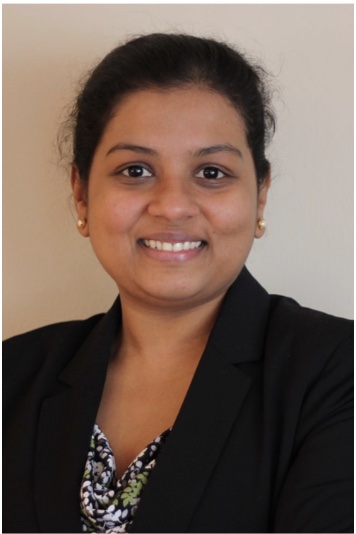 |
Chinmayee SubbanScientist Affiliate Professor Challenges in Reliable Quantification of Carbon Mineralization Abstract In order to meet the goals of the 2015 Paris Agreement, most future emissions models predict that in addition to emissions reductions, carbon dioxide removal (CDR) will be critical. There are diverse CDR methods being explored, however among them CO2 mineralization offers particularly long-term carbon capture and storage. Mineralization can be achieved under a broad set of conditions across natural and engineered systems, and while this breadth enables diverse implementation of mineralization-based CDR, it brings difficulty in reliably measuring the carbon fluxes and quantifying the mineralized carbon under each of the conditions. In this talk, I will highlight the barriers to quantifying carbon mineralization in different environments with the hope of sparking a discussion around the role that synchrotrons could play in advancing the science of mineralization-based CDR interventions. Bio Chinmayee Subban is a Scientist in the Coastal Sciences Division at the Pacific Northwest National Lab (PNNL) and an Affiliate Professor of Materials Science and Engineering at the University of Washington in Seattle. She leads PNNL’s research portfolio on marine carbon dioxide removal (mCDR), which includes multiple interdisciplinary efforts ranging from fundamental materials optimization to field testing of emerging mCDR strategies, and the development of framework for mCDR monitoring, reporting, and verification. Prior to joining PNNL she was a Research Scientist in the Energy Technologies Area of Lawrence Berkeley National Lab. Dr. Subban received her PhD in Chemistry from Cornell University. <return to Earth and Environmental Sciences Visioning Workshop |
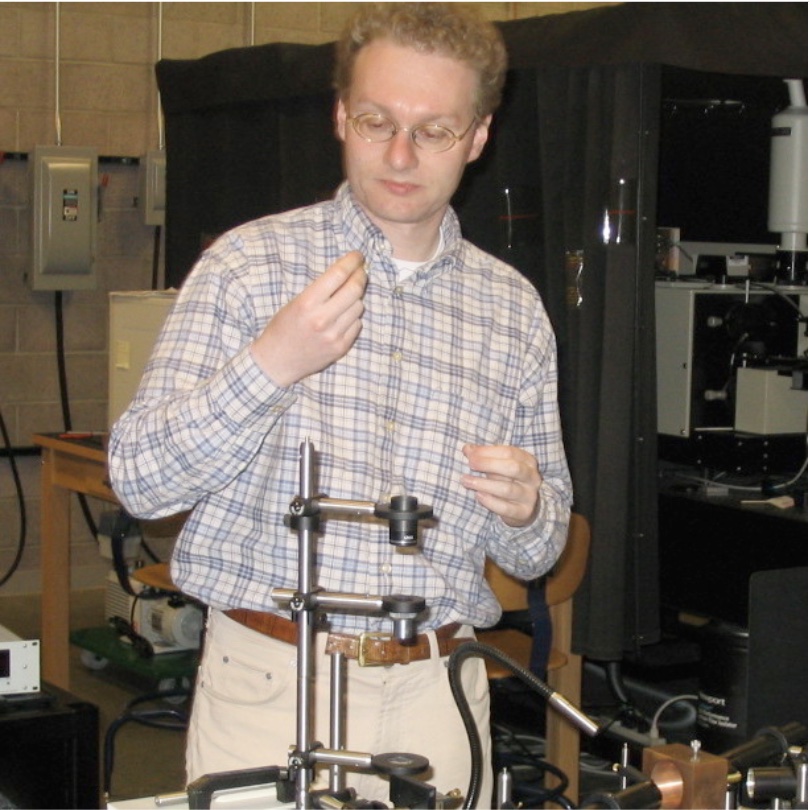 |
Oliver TschaunerProfessor of Research Synchrotron experiments across Energy Scales Abstract Synchrotron radiation is continuous, thus any part of its spectrum may be used for experiments. This becomes advantageous where a) at a given energy the flux of the synchrotron radiation surpasses that of in-house sources, b) the energy is beyond the range of in-house sources (i.p. at high X-ray energies), c) tuning energy is essential, d) the brilliance of the synchrotron beam permits reducing the spatial scale of the probe. Another advantage of different type is the fact that at the synchrotron experimental methods of different energy-scales could be combined or be correlated. This point is of particular interest at very small spatial scales. In my talk I present case studies where the combination of synchrotron techniques of different energy-scales have been used to solve scientific problems beyond the reach of in-house instrumentation. Bio I am mineralogist and crystallographer. My main interest is in the examination of solid phases that occur at high pressures with emphasis on the deep Earth and processes during large asteroid impacts. I want to understand how extreme pressure changes the chemical behavior of elements and how these changes affect Earth and planetary bodies in general. I combine dynamic and static compression experiments in material synthesis with studies of natural samples. B.S. and M.S. – University of Cologne, 1994 Ph.D. – University of Cologne (thesis work conducted at Max- Planck Institut für Chemie), 1997 <return to Earth and Environmental Sciences Visioning Workshop |
 |
Wen-lu ZhuProfessor In-situ Studies of Rock Deformation (ISRD) Abstract The deformation of rocks encompasses a diverse set of physical processes that directly influence and control wide-ranging geological phenomena of societal and scientific importance. Deformation experiments to characterize and quantify the response of rocks to mechanical, chemical, and thermal loads play a central role in understanding the dynamics of fluids in the critical zone, in tracking the global water budget, in mitigation and assessment of geohazards, in deciphering the physics of earthquakes, in predicting rates of topographic change, in determining the drivers of volcanism, and in revealing the factors that control plate tectonics. Laboratory-based studies of rock deformation are an essential component of addressing most of the twelve priority science questions outlined by Earth in Time, the recent National Academy of Sciences decadal survey on the future of Earth Science research. Experimental rock deformation faces the unrelenting challenge of measuring physical properties at extreme conditions and across many orders of magnitude in length scale and time scale. In addition, target processes are often dynamic, such that hypotheses can only be tested by tracking the evolution of material properties and microstructure during deformation. Synchrotron radiation has emerged as a major tool for overcoming these difficulties through collection of a wide spectrum of data in situ during deformation of geological materials. Given the transformative potential of the in-situ characterization of material properties and microstructures in rock deformation research, it is imperative for the rock physics community to integrate synchrotron-based analytical methods with deformation experiments. Infrastructure development projects that support in-situ rock deformation research at synchrotron beamlines will lead to major breakthroughs in understanding the physics of rock deformation. New data streams from these efforts will have wide-reaching applications in basic and applied research, on topics ranging from hazard mitigation to energy resources, to space exploration, and beyond. Bio Wen-lu Zhu, Professor, Department of Geology, University of Maryland. Wen-lu received her PhD in Stony Brook University. She worked at the Woods Hole Oceanographic Institution before moving to the University of Maryland. Wen-lu’s research focuses on the coupling between rock deformation and fluid flow in Earth’s crust and mantle. She measures the evolution of mechanical and transport properties and quantifies the change of the 3-D rock structure at various scales. She was the recipient of the 2020 Louis Néel Medal by the European Geosciences Union for her contributions to understanding coupling between fluids and rock deformation. Currently, she is leading the effort of integrating beamline technologies with rock deformation experiments (https://www.isrdrcn.org). <return to Earth and Environmental Sciences Visioning Workshop |
 |
Kevin WilsonSenior Scientist Challenges in Understanding Multiphase Atmospheric Chemistry Abstract Nanometer-sized aerosols and micron-sized droplets play central roles in the atmosphere with large scale impacts on air pollution, climate and health. Although small in number, these particles have and will have an outsized influence on the chemical evolution and radiative balance of current and future atmospheres. Developing simple yet scientifically accurate descriptions of the role that surface chemistry plays in the multiphase oxidation of organic aerosol and cloud droplet nucleation remains an outstanding challenge. This challenge originates in understanding how to link the reaction rates and mechanisms measured in beaker scale containers with those occurring at the micro- and nanoscales. In this talk, I will highlight the unique role that synchrotrons might play in advancing our fundamental understanding of chemistry occurring at the surface of aerosols and cloud droplets. Bio After receiving a B.A. in Chemistry from Willamette University in 1993, Dr. Wilson took a research assistant position at Los Alamos National Laboratory where he studied the chemistry of polar stratospheric ice clouds using nonlinear optics. During this time, he also received a M.A. degree in Liberal Arts from St. John’s College in Santa Fe, NM. He then earned a Ph.D. in Physical Chemistry in 2003 from the University of California, Berkeley. His doctoral work focused on probing liquid surfaces using synchrotron radiation at the Advanced Light Source (ALS), Lawrence Berkeley National Laboratory (LBNL). In 2003 he received a Fredrick Reines Distinguished Postdoctoral Fellowship from Los Alamos National Laboratory, where he began developing novel instrumentation for the sensitive detection of atmospheric particles. In 2004 he returned to LBNL as a limited term scientist at the Chemical Dynamics Beamline (ALS). Currently, he is a senior scientist. In 2012 Wilson won an Early Career Award from the Office of Science (DOE), enabling his research group to focus on understanding the fundamental reaction mechanisms of organic molecules at liquid water interfaces. Wilson’s other research interests include soot formation chemistry, low temperature gas phase reactions in planetary atmospheres and the heterogeneous atmospheric chemistry of organic aerosols. <return to Earth and Environmental Sciences Visioning Workshop |
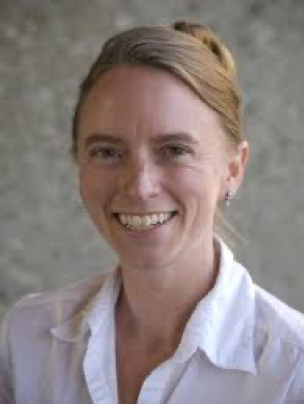 |
Jennifer JacksonProfessor Bio Jennifer M. Jackson is the William E. Leonhard Professor of Mineral Physics in the Seismological Laboratory at Caltech where her research focuses on minerals in the deep Earth and planetary interiors. After earning her Ph.D. from the University of Illinois at Urbana-Champaign in 2005, she was a Visiting Scientist at the Advanced Photon Source and Postdoctoral Fellow at the Carnegie Institution for Science in Washington DC. In 2007, she joined the faculty at Caltech. Her research vision incorporates the role of minerals in shaping the diverse processes inside Earth, from the deepest parts of the metallic core to volcanic systems near the surface. She develops and applies unique experiments to materials under extreme conditions using diamond-anvil pressure vessels, infrared lasers, and synchrotron-based x-ray scattering techniques. While fostering interdisciplinary collaborations with colleagues at Caltech, JPL and the greater scientific community, she has mentored students and postdoctoral scholars, and expanded her research purview beyond Earth. Recently, she is developing unconventional geophysical techniques that involve infrasound detection of seismicity from aerial-platforms (balloons) to study the interiors of other planetary bodies, such as Venus. <return to Earth and Environmental Sciences Visioning Workshop |
Energy Sciences
 |
Carlos Morales-GuioAssistant Professor Challenges in understanding and developing electrified processes for CO2 capture and utilization Abstract Carbon capture and utilization (CCU) is a crucial technology for mitigating the effects of climate change. In commercial technologies, CO2 is absorbed at high pressure and low temperature into an amine solution in an absorber unit. CO2 is then released at low pressure and high temperature in a stripping unit that concentrates CO2 and regenerates the amine. The amine regeneration step stands out as the most energy-intensive aspect of the capture process. Post-separation CO2 can be upgraded into fuels and chemicals in a CO2 electrolyzer using renewable electrons, but this step also presents a high energy demand and has been demonstrated only at small bench-scales. One approach to CCU is reactive carbon capture (RCC), which integrates the capture and concentration step with the direct transformation of CO2 in its captured form into a fuel or chemical. RCC is promising in that it could operate at the same high pressures and low temperatures required for the CO2 capture step thus reducing capital and operational costs for CCU. In this talk, a brief primer on CO2 capture and utilization is presented. The fundamental challenges in developing catalysts and absorbers for CCU are discussed with an emphasis in understanding the coupling of kinetics, thermodynamics and transport in these processes. Bio Carlos Morales-Guio is an Assistant Professor in the Department of Chemical and Biomolecular Engineering at the University of California, Los Angeles. His research group is interested in electrochemical catalysis, particularly with respect to energy and chemical transformations for sustainable energy applications. Carlos received his B. Eng. degree in Chemical Engineering from Osaka University and his M.S. and Ph.D. in Chemistry and Chemical Engineering from the École Polytechnique Fédérale de Lausanne. Before joining UCLA in the fall of 2018, Carlos was a postdoctoral fellow at Stanford University. Carlos is a recipient of the Swiss National Science Foundation Postdoctoral Fellowship, the Asea Brown Boveri (ABB) Award 2017 and is a Scialog Fellow on Negative Emission Sciences. |
 |
Ksenia GlusacProfessor Molecular Engineering in Photochemistry and Electrochemistry Abstract Well-defined and chemically tunable molecular motifs are essential building blocks in advanced photocatalytic and electrocatalytic materials. Here, we will discuss the progress and challenges in the field of molecular photochemistry using examples from our own research on chromophore/catalyst assemblies composed of transition metal centers coordinated to nanocarbon ligands. The presentation will reflect on how advanced time-resolved laser spectroscopies have helped advance the field and we propose future targets for instrumentation development. We will also discuss recent research advances in molecule/electrode hybrid materials, with special emphasis on our recent studies of thin films composed of graphene nanoribbons coordinated with Rh-based water reduction electrocatalysts. The results of our in situ electrochemical studies will be used as an example of how spectro-electrochemistry allows us to pinpoint plausible catalytic cycles and to illustrate the limitations of current experiments. Bio Ksenia Glusac received her academic training from the following institutions: B.S. from University of Belgrade, Serbia (1999; Mentor: Prof. Radomir Saicic; Thesis: Syntheses of Model Taxol Derivatives); Ph.D. from University of Florida, USA (2004; Mentor: Prof. Kirk S. Schanze; Thesis: Delocalization and Migration of Triplet States in Pt-acetylide Oligomers); Postdoctoral training from Stanford University, USA (2006; Mentor: Prof. Michael D. Fayer; Topic: Electron Transfer Dynamics in Restricted Media Using Ultrafast Spectroscopy). Ksenia started her independent research career at Bowling Green State University in 2006, where she was also a member of the Center for Photochemical Sciences, where she was promoted to the Associate level in 2012. In 2017, she took a position as the Associate Professor at the University of Illinois Chicago, with a joint appointment at the Argonne National Laboratory. Ksenia was promoted to Professor in 2021. The Glusac group studies molecular motifs relevant to the energy storage and solar fuel applications. These projects are funded by NSF and DOE. Ksenia’s research has been acknowledged by the following awards: (i) BGSU Outstanding Young Scholar Award, 2012; (ii) NSF CAREER Award, 2011-2016; (iii) ACS PRF Postdoctoral Fellowship, 2004-2006; (iv) Jones Award for Creativity and Originality, 2002. |
 |
Beatriz Roldán CuenyaDirector of the Interface Science Department Dynamics at Electrocatalytic Interfaces Abstract Climate change concerns have spurred a growing interest in developing environmentally friendly technologies for energy generation (i.e. green H2 from water splitting). Moreover, the electrochemical reduction of CO2 (CO2RR) into value-added chemicals offers an additional possibility to store renewable energy into chemical bonds. Thus, efficient, selective and durable catalysts must be developed. Nonetheless, in order to tailor the chemical reactivity of nanocatalysts, fundamental understanding of their structure and surface composition under reaction conditions must be obtained. It is by now well known that even morphologically and chemically well-defined pre-catalysts will be susceptible to drastic modifications during catalysis, especially when the reaction conditions themselves change dynamically. Even more, such changes might be reversible when the applied external stimulus (e.g. electrical potential and/or chemical environment) is removed, resulting in misleading information on the nature of the active sites when only pre-natal and post-mortem characterization data are available. This talk will provide examples of the operando evolution of catalysts employed for CO2RR as well as the oxygen evolution reaction (OER) using model pre-catalysts ranging from single atoms (Metal-N-C) to nanoparticles (Cu2O cubes, ZnO@Cu2O cubic NPs, CoOx NPs), and thin films (Co1+δFe2-δO4). Some of the aspects that will be discussed here include the understanding of the active state formation, and the correlation between the dynamically evolving structure and composition of the working catalysts and their catalytic performance. Our studies are expected to open up new routes for the reutilization of CO2 through its direct conversion into industrially valuable chemicals and fuels and a more efficient green hydrogen production. Bio Prof. Beatriz Roldán Cuenya is currently Director of the Interface Science Department at the Fritz Haber Institute of the Max Planck Society in Berlin (Germany). She is an Honorary Professor at the Technische Universität Berlin, at the Freie Universität Berlin, and at the Ruhr-University Bochum, all in Germany. Also, she serves as a Distinguished Research Professor at the University of Central Florida (USA). Prof. Roldán Cuenya began her academic career by completing her M.S./B.S. in Physics with a minor in Materials Science at the University of Oviedo, Spain in 1998. Afterwards she moved to Germany and obtained her Ph.D. from the Department of Physics of the University of Duisburg-Essen with summa cum laude in 2001. Subsequently, she carried out her postdoctoral research in the Department of Chemical Engineering at the University of California Santa Barbara (USA) until 2003. In 2004, she joined the Department of Physics at the University of Central Florida (UCF) as Assistant Professor where she moved through the ranks to become a full professor in 2012. In 2013 Prof. Roldan Cuenya, moved to Germany to become Chair Professor of Solid State Physics in the Department of Physics at Ruhr-University Bochum until 2017. During her academic career, Prof. Roldan Cuenya received an Early CAREER Award from the US National Science Foundation (2005) and the international Peter Mark Memorial award from the American Vacuum Society (2009). In 2016 she became Fellow of the Max Planck Society in Germany and also received the prestigious Consolidator Award from the European Research Council. In 2020, she became a member of the Academia Europaea (Academy of Europe). She received the AVS Fellow Award (2021), the International Society of Electrochemistry-Elsevier Prize for Experimental Electrochemistry (2021), the 2022 Paul H. Emmet Award of the North American Catalysis Society, and the Röntgen Medal of the City of Remscheid (2022). Prof. Roldan Cuenya is the author of more than 200 peer-reviewed publications, 6 book chapters, and 6 patents. She has given 245 invited talks, with 13 plenary talks and 33 keynote lectures since 2017. Her H-factor is 74 (Google Scholar) and her work has received over 21,500 citations. She presently serves on the editorial advisory boards of the Journal of Catalysis and Chemical Reviews. In addition, she also contributes to a number of advisory committees, including the Liquid Sunlight Alliance (USA), the Advanced Research Center Chemical Building Blocks Consortium (Utrecht, the Netherlands), the Spanish Synchrotron Facility ALBA (Barcelona, Spain), the German Synchrotron DESY (Hamburg, Germany), the Helmholtz-Zentrum Berlin for the strategic development of BESSY II (Berlin, Germany), the Institute of Chemical Research of Catalonia (ICIQ in Tarragona, Spain), the UK Catalysis Hub and the Ertl Center for Electrochemistry & Catalysis (South Korea). Prof. Roldan Cuenya’s research program explores physical and chemical properties of nanostructures, with emphasis on advancements in nanocatalysis based on operando microscopic and spectroscopic characterization. |
 |
Benny FreemanProfessor Director Basic Science Questions Limiting Advances in Polymer Membranes for Separations Abstract Polymer membranes are widely used for purification of gases and liquids based on their low energy requirements relative to conventional separation techniques, mechanical and operational simplicity, and compact size. Research efforts have long focused on improving membrane separation performance, longevity (e.g., reducing fouling by contaminants in feedstreams), and manufacturability. However, basic science challenges frustrate rapid progress. For example, membranes today are manufactured via a complex, far from equilibrium process known as non-solvent induced phase separation (NIPS). The kinetics and thermodynamics of structure formation via NIPS are very poorly understood, so new membrane materials require an exhaustive, Edisonian process to optimize NIPS process variables to produce useful membranes. Polymer membranes have been used for desalination of water (e.g., seawater) since the 1970’s in a process known as reverse osmosis. However, we still have very limited basic science understanding of the state of aggregation of ions in solution and, particularly, in membranes, and such ion aggregation/pairing effects control electrostatic interactions of ions with membranes, ion solubility and diffusivity in membranes, which, in turn, control ion transport rates through membranes and the selectivity for such membranes for water vs. ions. The role of water interactions with ions in membranes on water and ion transport properties is also poorly understood, hampering ability to rationally design advanced materials to more effectively separate water from ions. As our society moves towards electrification to reduce dependence on fossil fuels and reduce greenhouse gas emissions, we need ever-increasing access to critical metals such as lithium, cobalt, nickel, neodymium, dysprosium, etc. Whether these metals come from recycling e-waste, mining, extraction from brine sources, or some combination, fast and efficient separation of such metals from mixtures in aqueous solutions will be exceptionally important. Our knowledge of the behavior of such complex electrolyte mixtures and how those electrolyte mixture interact with membranes is rudimentary at best, and mastering the basic science governing partitioning and diffusion of such ions in membranes will markedly accelerate design of new materials to effectively recover such ions for electrification applications. When membranes are used to filter contaminants from water, the membranes are subject to fouling, which reduces membrane performance. Understanding the basic science of how foulants interact with membrane interfaces in hydrated environments and the structure of foulants and membranes at interfaces where they interact is key to discovering new routes to prepare fouling-resistant membranes. These are a few of the pressing long-term basic science challenges that inhibit rapid design and implementation of novel membrane materials and structures for next-generation separations applications. Bio Benny Freeman is the William J. (Bill) Murray, Jr. Endowed Chair in Engineering at The University of Texas at Austin and is Professorial Fellow at Monash University. He is a professor of Chemical Engineering and has been a faculty member for 34 years. Dr. Freeman’s research is in polymer science and engineering and, more specifically, in mass transport of small molecules in solid polymers. He currently directs 17 Ph.D. students and postdoctoral fellows performing fundamental research in gas and liquid separations using polymer and polymer-based membranes. His research group focuses on discovery of structure/property relations for desalination and gas separation membrane materials, new materials for hydrogen separation, natural gas purification, carbon capture, and new materials for improving fouling resistance, permeation, and separation performance in liquid separation membranes. He is Director of the Department of Energy’s Energy Frontier Research Center entitled Materials for Water and Energy Systems (M-WET). His research is described in more than 500 publications and 24 US and international patents. He has co-edited 5 books on these topics. His research has served as the basis for several startup companies, including EnergyX and NALA Systems. He is a member of the U.S. National Academy of Engineering. |
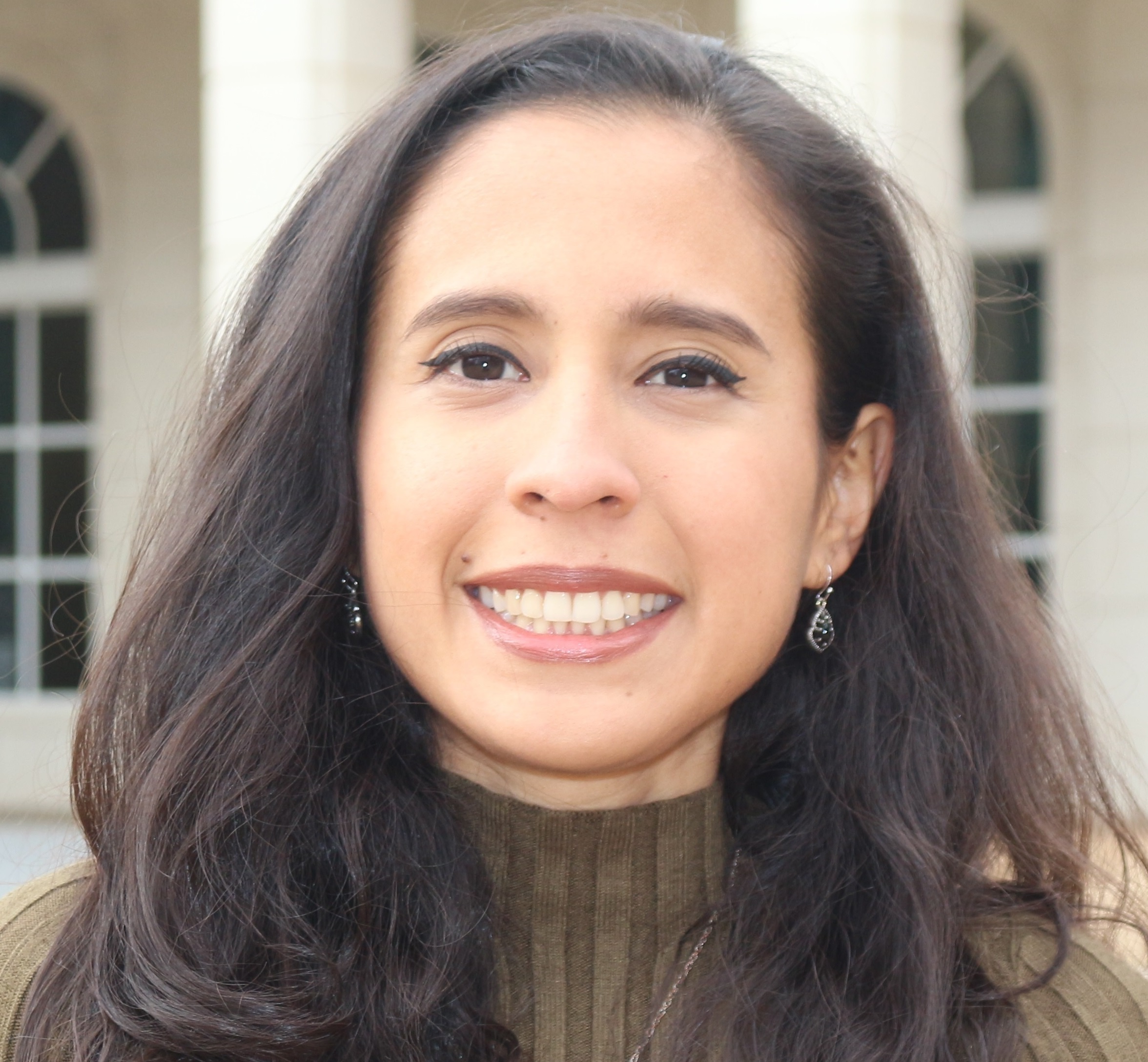 |
Tanny ChavezComputational Research Scientist Mapping the Future: Artificial Intelligence for Enhanced Synchrotron Research Capabilities Bio Tanny Chavez is a computational research scientist at Lawrence Berkeley National Laboratory. She received her PhD in electrical engineering from the University of Arkansas, where she studied the implementation of data analysis algorithms for the detection of breast cancer in terahertz imaging. She is currently working in the development of data analysis pipelines at the Advanced Light Source through machine learning approaches. Her research interests include data science, machine learning, and scientific software development. |